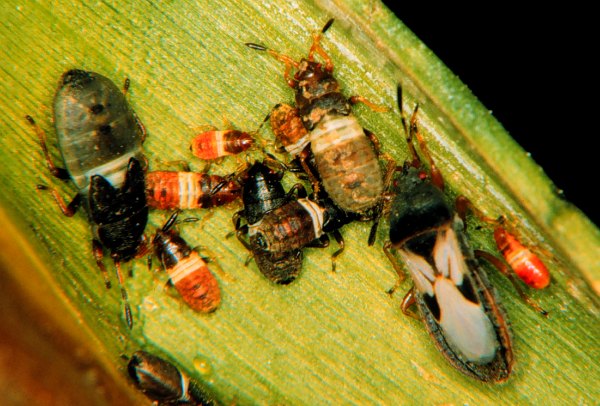Chinch Bug
 Scientific Name
Scientific Name
Blissus leucopterus
Host
Chinch bugs attack a variety of forage, lawn, and wild grasses. The principal crop plants damaged are wheat, corn, sorghum, oats, etc.
Symptoms
The chinch bug pierces the plant with its moth parts and sucks out the plant sap. This feeding prevents normal growth and results in dwarfing, lodging, and yield reduction. Severe infestations during early development may cause plants to wilt and die prematurely. Most injury is caused by the six nymphal instars.
Life Cycle
Chinch bugs overwinter as adults in various protected areas, particularly among weeds and grasses near fields. Adults emerge in the spring and deposit eggs singly behind the leaf sheath or in the soil at the base of the small grain crop plant. In a few days, the eggs hatch and the nymphs begin feeding on all parts of the host plant from the roots to the uppermost leaves. The nymphs undergo six developmental stages, the last being the adult stage. Two to three generations occur per year, the later generations migrating to corn and sorghum when small grain crops become dry.
Description
The adult chinch bug is about 4 mm long and black with opaque wings. The wings vary in length, from as long as the body to 1/3 to 1/2 the length of the body and each bears a distinctive, triangular, black mark. The wingless nymph is smaller than but similar in shape to the adult. The head and thorax are brown; the eyes are dark red; and the abdomen is pale yellow or light red with a black tip.
Control
Please contact your local county extension office for current information.
